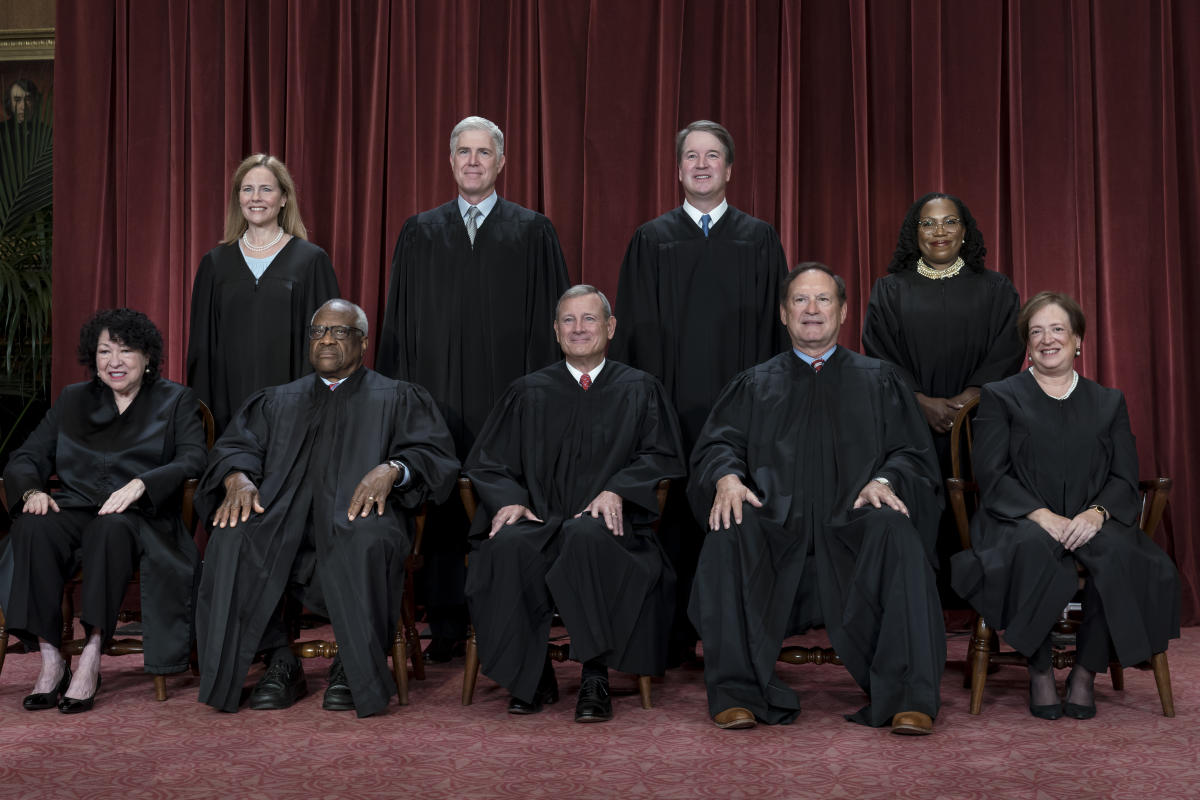The World Health Organization’s (WHO) declaration Friday that the coronavirus emergency was “over” marked the end of a three-year journey in which the world was transformed by a pandemic that has killed at least seven million people and left many assumptions about how shook the foundations of what life would look like in the future. the 21st century.
That unwanted journey began on January 30, 2020, when Dr. Tedros Adhanom Ghebreyesusthe Director-General of the WHO, declared that the novel coronavirus was a threat serious enough to warrant a global public health emergency.
At the time, there had been 170 confirmed deaths in China, where the virus originated sometime in late 2019, but Tedros said he expected things to get worse.
“All countries must be prepared for containment,” he said.
The virus spread from China to Iran and Italy. The United States is bracing for an impact, hoping to somehow avoid the blow. Twenty-one people on the Grand Princess cruise ship became ill. Trump said he was glad the passengers would remain in quarantine off the coast of Northern California.
“I like the numbers to be where they are,” he said during a tour of the Centers for Disease Control and Prevention headquarters in Atlanta on March 7. “I don’t need the numbers to double because of one ship.”
But the virus was brutal and thrived in a globalized world of easy travel, dotted with busy cities crisscrossed by commercial airline routes. If illness were a metaphor, then the coronavirus was all too appropriate for a hot and busy planet.
On March 11, Tedros declared the coronavirus a pandemic. The United States went into lockdown. Europe followed suit and apparent all of human civilization came to a standstill. Big cities emptied, the rich fled to country houses, the tourists disappeared. Planes remained empty. Restaurants placed takeout orders through plastic screens. People disinfected and scrubbed. Videos of hand washing went viral.
At the time, the Trump administration was implementing what it called a “15 Days to Slow the Spread” strategy. The curve of infections would be flattened, health experts assured the public. Over time, herd immunity would prevail.
After several weeks of taking the virus seriously, Trump grew impatient. He predicted that the pandemic would be over by Easter. Governors in some Republican states rushed to reopen restaurants and other establishments.
It would take three years of masks, swabs and shots before the coronavirus would be suspended worldwide. The availability of vaccines, combined with the protection gained from previous infections, simply gave the virus fewer and fewer opportunities to spread.
Much of the country remained cautious well into 2021, especially in Democratic-controlled states and cities. But then they too grew impatient, especially after the widespread availability of vaccines significantly reduced the risk of death and serious illness. And as the surprise Republican victory in Virginia’s gubernatorial election helped illustrate, dissatisfaction with pandemic restrictions could exact a steep political toll.
After the worst of the Omicron wave passed in January 2022, restrictions gradually fell, never to return in most places. Others were challenged in court, such as the Biden administration’s mask requirement for travelers and the vaccination mandate for businesses. The last we-are-this-together spirit of 2020 dissipated to reveal a nation as intensely polarized as ever.
But when Tedros briefed the media on Friday, it was largely an acknowledgment of what had become clear: “With great hope,” he declared, “I declare COVID-19 a global public health emergency,” adding that it ‘time was to transition to long-term management of the COVID-19 pandemic.”
His announcement was symbolic. Exactly when a virus becomes endemic and settles into a predictable pattern is a matter of epidemiological debate that Tedros has not attempted to resolve. And he pointed out that the virus continues to kill and sicken thousands of people around the world every day. “This virus is here to stay. It’s still killing, and it’s still changing,” Tedros said.
Most people now seem willing to live with that reality. Even China, long the most cautious country, has cast aside its tough zero-COVID policy after public frustration over lockdowns and incessant testing culminated in public protests late last year.
Public health and national emergencies are also coming to an end in the US. Vaccination requirements for federal workers and travelers will expire next week. President Biden now travels frequently and hosts large gatherings at the White House, where masks are becoming increasingly rare.
On Friday, CDC Director Rochelle Walensky, often criticized by Republicans for her continued support of vaccines and masks, announced she would resign from the agency. The CDC’s coronavirus tracking dashboard is also being scaled back, now that most people aren’t checking infection rates before making weekend plans.
Yet many Americans are still remaining cautious, masking up even when outside, continuing to test at the slightest hint of illness and avoiding large indoor gatherings. Although they are a dwindling minority, they believe that Americans too easily abandoned the vulnerable — the elderly, those with weak immune systems — as they sought to return to restaurants and sports arenas.
The end of the WHO emergency could embolden those who say that all vestiges of pandemic life – in many institutions, for example, largely useless plastic screens remain in place – should be abolished.
There remains a latent desire to return to the world as it was in 2019, before anyone had ever thought of hoarding KN-95 face masks.
However, that world has disappeared.





